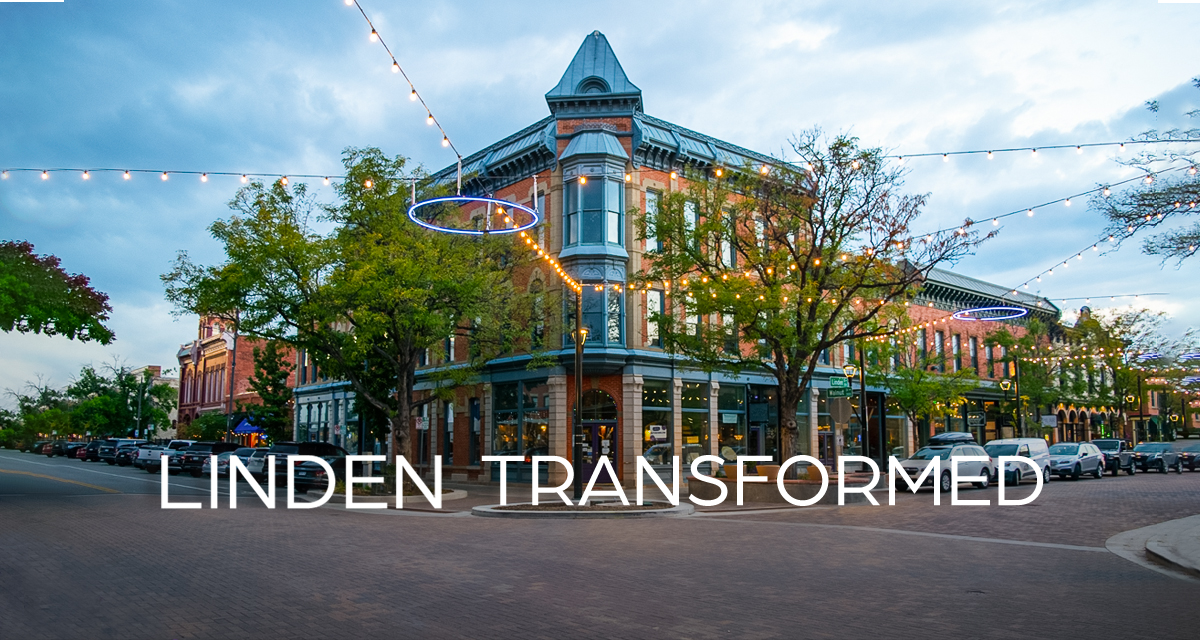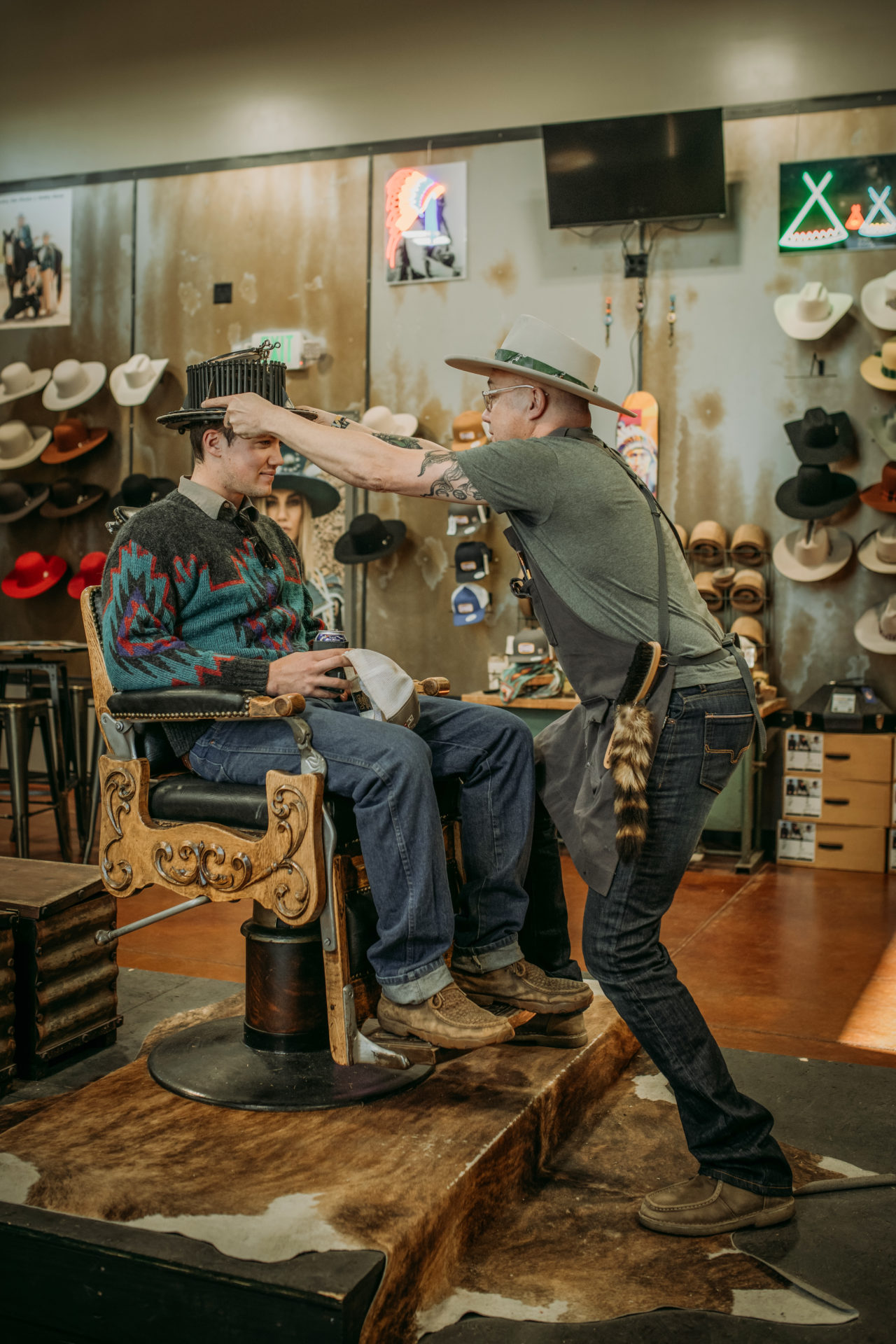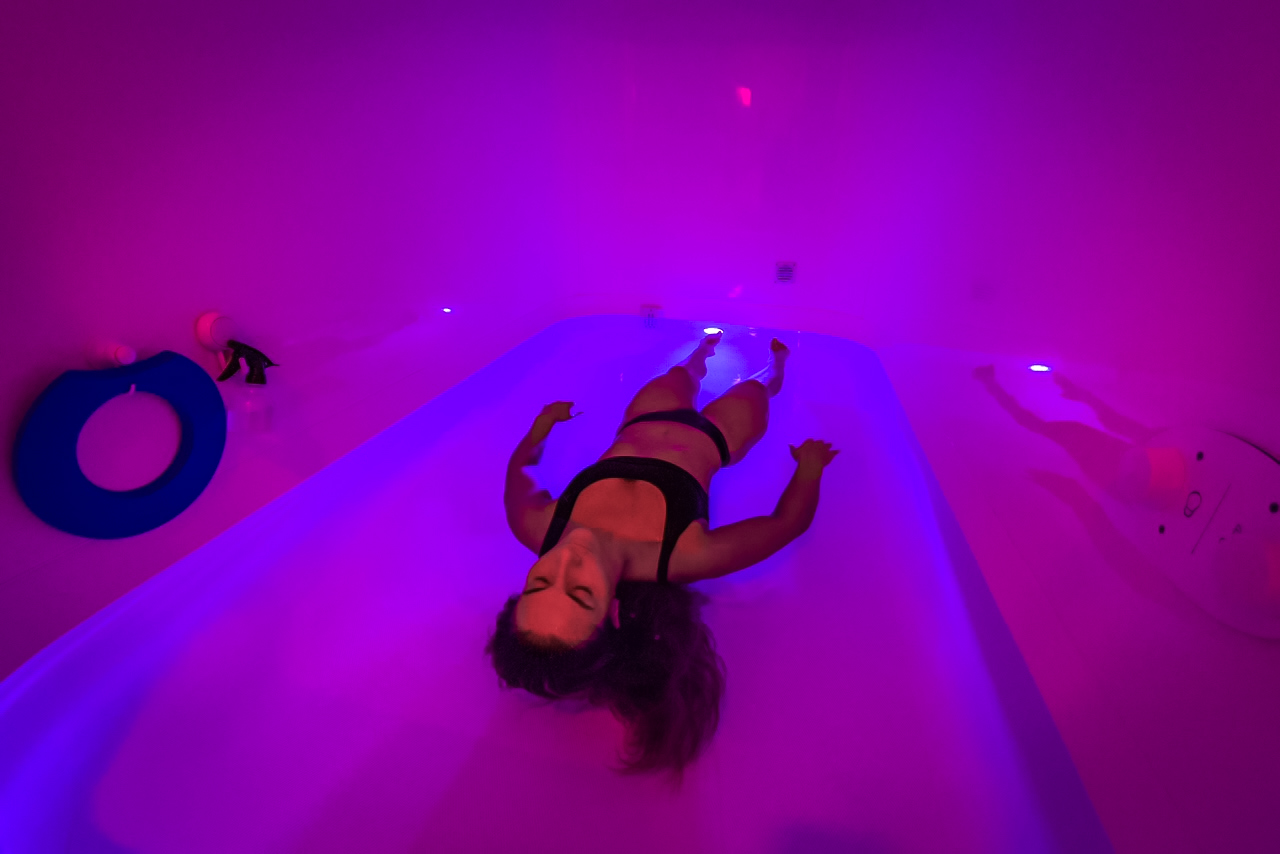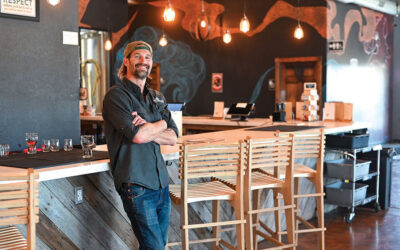– It’s a street. It’s an event space. It’s Linden Street in Fort Collins. –
By Jared Fiel | Photos by Jordan Secher
In most cities, a street is a street. But in August, Fort Collins unveiled the new convertible Linden Street.
By adding gates to close off traffic during events, changing the parking alignment, removing curbs and adding planters to make the space safer for pedestrians, the city has made it possible to host events while maintaining regular traffic.
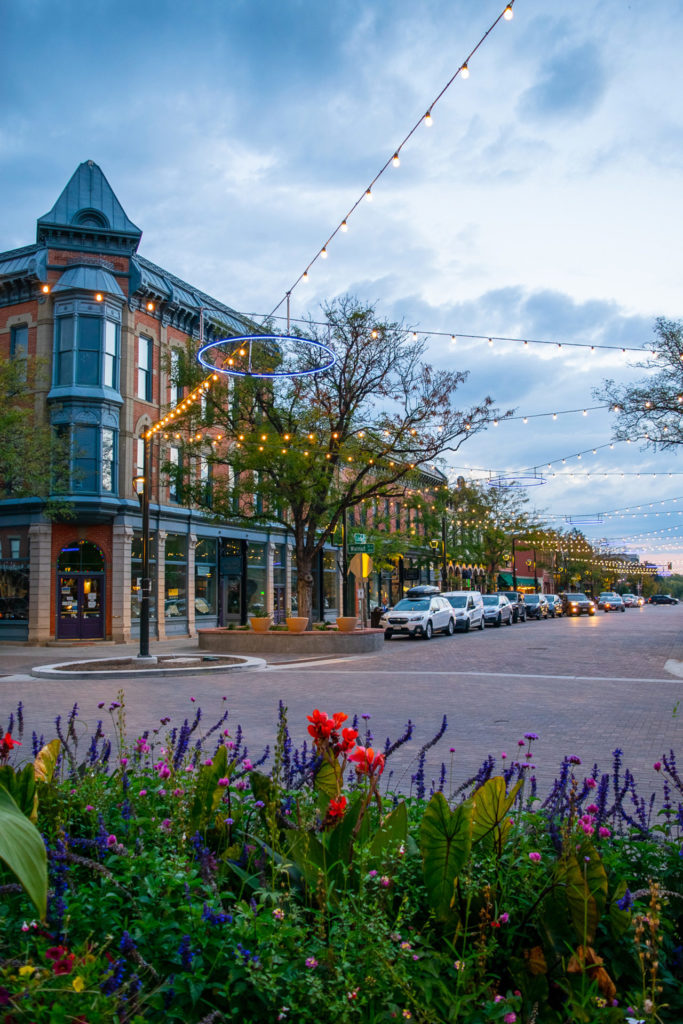
Why convertible?
The idea of a “convertible” street at Linden has been a long time in the planning. Todd Dangerfield, project manager for capital projects for the Downtown Development Authority, says it all started in 2014 when the DDA held a meeting “to imagine an enhanced, curbless, event streetscape design for Linden without turning it into a pedestrian-only extension of Old Town Square.”
He adds, “The intent was for the street to have the flexibility to host a variety of ‘right-sized’ events on either widened sidewalks, half block or full block without having to close the entire block down for every event.”
The model for this design approach was Fillmore Street in Cherry Creek in Denver.
Willett says the project was also intended to connect two iconic areas of the city. The River District and Old Town are split by the railroad and Jefferson Street, creating a feeling of separation, says Project Manager Dillon Willett. This leaves Linden Street to act as the primary corridor connecting the two neighborhoods.
He adds that while the city couldn’t do anything about the railroad, the project aimed to “create an aesthetically pleasing and safe corridor, encouraging pedestrian traffic while still maintaining a vehicular option. Overall, this will strive to create a more cohesive space between Old Town and the River District.”
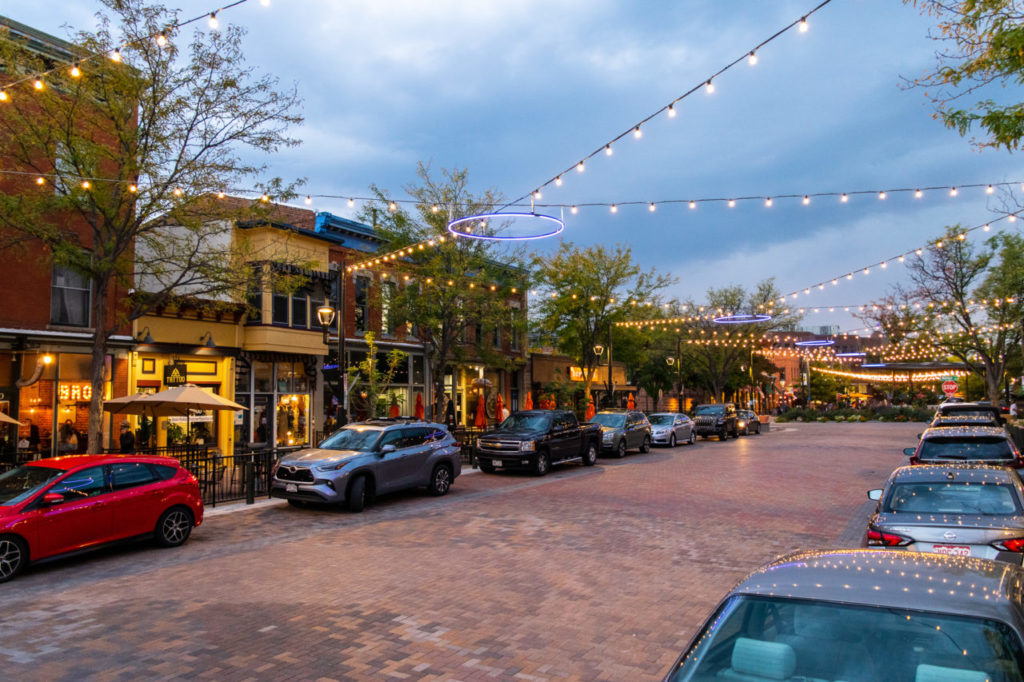
Construction upheavals
Construction for the project was broken into two parts to make it easier for businesses in the area that were already hit by a number of issues.
“First, they did Walnut Street. Then there was COVID and then Linden Street. I hope they have touched all the bases enough now and we can leave our stuff open for a while,” says Aaron Schneider, manager of Nature’s Own, the long-time rock shop on Linden.
Schneider pushed back on the plans for the changes on Linden Street originally because he was concerned about the loss of parking spots when Linden changed to parallel parking. “I’ve seen it over the years. People drive around, looking for spots. They might circle again if they can’t find one. If they still can’t find one, they might decide to come some other time,” he says.
He argued with the city council, saying, “If you want to turn this into Pearl Street (in Boulder), you should walk Pearl Street now and see all the closed stores there.”
Despite “fighting the good fight,” as Schneider says of his attempts to get the city council to keep the parking, he finds the result of the project is a very nice addition for the city. “I think it’s going to be great, and they did a really nice job and did it very quickly,” he says.
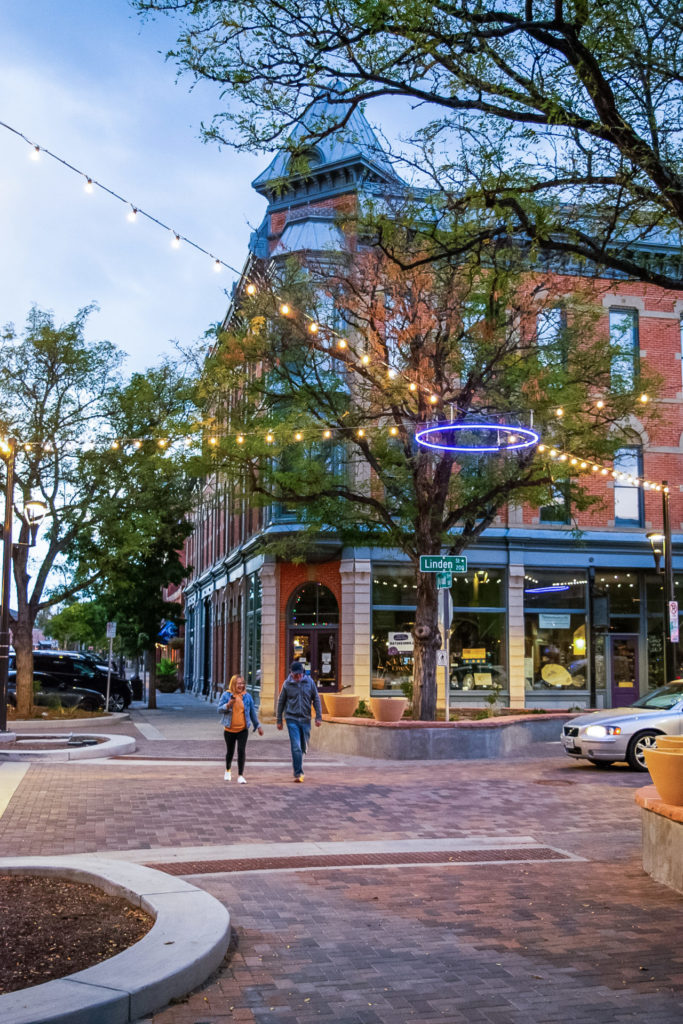
Willett is proud of how the team worked to get the project done on time and with limited impacts on businesses.
“After two years of pandemic-related setbacks, business owners were not excited about construction,” Willett says. “The city and KCI, our contracting partner, tried to reduce the impacts to businesses by maintaining pedestrian access and phasing construction in ways that created less direct impact to the business frontages. The site was also setup in a way that was intended to feel as little like a construction site as possible, while maintaining safety requirements.”
A few ways they accomplished that included event-style fencing instead of typical construction fencing, and temporary string lighting was used instead of industrial construction lighting.
While the main part of the construction was complete in August, there was some finishing work still going on, including the stone cap installation on the planter walls, at press time.
The city hosted a celebratory event in September on Linden with music, vendors and fun. Willett says about 2,000 attended the event.
When you walk around Linden today–which is much easier to do now that the curbs are gone–you will see a refreshed Linden Street that includes the patios for bars and restaurants.
“Expanded outdoor dining areas have been coordinated for all the restaurants that requested it and had some form during the pandemic,” Willett says. “This is a bit of a compromise, as it is significantly more space than they had prior to construction but slightly less than they did when occupying the parking areas. Overall, they have all told me that they are very happy with the final patio configurations.”
Schneider, who has been with Nature’s Own for more than 20 years, is also happy for the other businesses, many of whom are run by close friends. “I know how much this will help them,” he says. “It all looks great and is exciting for the city.”
He adds that the parking situation is still a concern for him, but he is educating his employees and his customers about where to park and encouraging more bicycling. He says customers came flocking back to his business after the pandemic. “We had the best two years of our business in the last two years,” he says. “The customers really came out.”
He hopes they will continue to do the same, even if they have to search a bit for a spot to park.
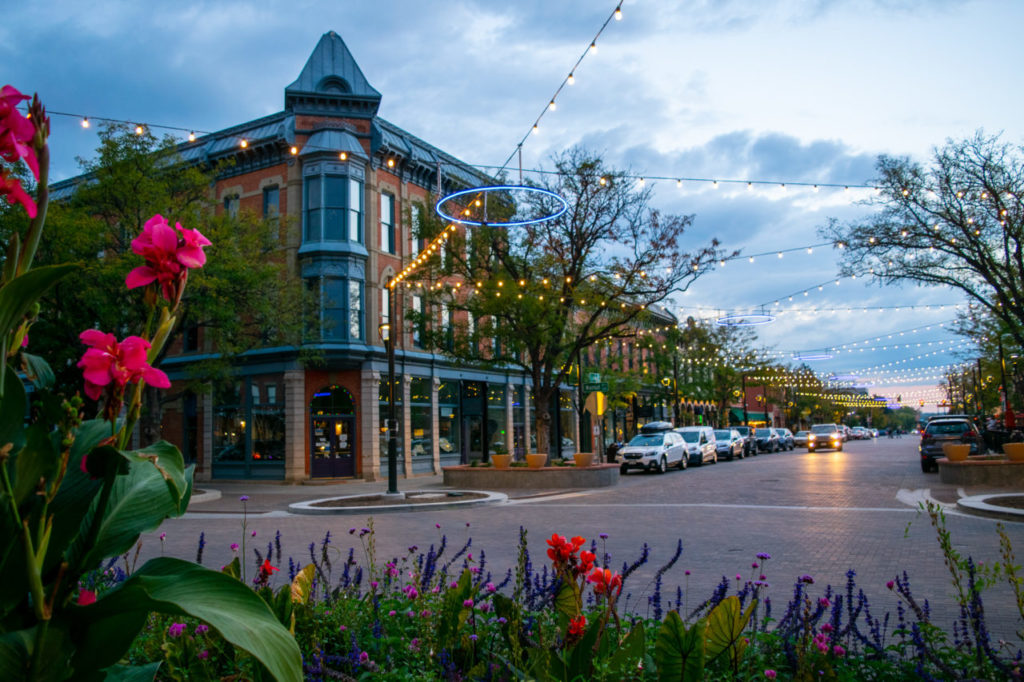
What was done to Linden Street?
The $3.5 million project to transform Linden Street was built in two phases in 2021 and 2022 to complement work done in 2020 on Pine and Jefferson streets.
Phase 1 (according to the city website, included):
– New paver intersection at Linden and Walnut
– Updated corners at the Linden and Walnut intersection
– New lighting at Linden and Walnut
– Updated pedestrian corners at Linden and Jefferson
– Updated pedestrian push buttons at the Linden and Jefferson corners
Phase 2 (according to Project Manager Dillon Willett, included):
– The removal of the curb and existing concrete and asphalt replaced by pavers from building face to building face
– New parallel parking
– Eight new planters and eight new trees on each side, bringing more shade and greenery into the space
– New lighting along the entire street
– New poles, streetlamps and Tivoli lights strung the length of the street
– Two large vertical turbines at the Old Firehouse Alley intersection. (“While purely aesthetic, they aid in bringing attention to alternative energy production options and provide an interesting focal point for the space,” Willett says).
– Stormwater improvements, which will ultimately tie into proposed stormwater improvements along Jefferson Street in the future. These improvements included a new 15-inch main storm line with several lateral connections to area inlets.
– Other underground work included running all new electrical and irrigation lines for the planters and lighting
– From Old Firehouse Alley to Jefferson, Bohemian Foundation has partnered with the city to include stage infrastructure which will support a large stage and shade structure for use on future events. This infrastructure included six reinforced concrete pads with anchors, electrical, water and empty conduit runs to support cable management.


